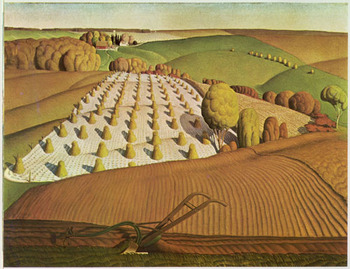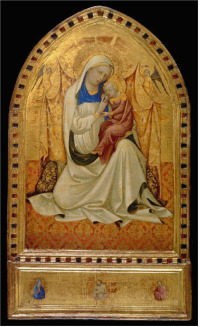If ever a work of art merited comparison with epic poetry, “The Battle of Issus” is it. Albrecht Altdorfer’s depiction of the moment in 333 B.C. when Alexander the Great routed Darius III for supremacy in Asia Minor is vast in ambition, sweeping in scope, vivid in imagery, rich in symbols, and obviously heroic–the Iliad of painting, as literary critic Friedrich Schlegel suggested.
…
That’s how I started my article, “An Epic Poem In Paint,” that is published in tomorrow’s Wall Street Journal. It’s in the Masterpiece column, which is published every Saturday, and which I have praised here before. Coincidentally, my last Masterpiece for the Journal, published last July, described the Alexander sarcophagus in Turkey’s archaeological museum — one of whose sides also depicts the battle of Issus.
Altdorfer’s version, of course, is far more expansive — this image does not do it justice, as it’s a big picture, about 4 ft. by 5 ft.

Oddly, I barely noticed the painting the first time I saw it. It sits in the Alte Pinakothek in Munich in the same gallery as Durer’s Self-Portrait, 1500, and I was so mesmerized by that work on my first visit to the Pinakothek that I didn’t remember the Altdorfer. I wrote about the Durer for the Journal (here), too.
If you go to Munich, don’t do what I did — they are both masterpieces, as are so many other works there — so take a long look at both. There are no paintings by Altdorfer in the United States; some museums do own drawings, though nothing of this majesty.
Photo: Courtesy Alte Pinakothek




 It wasn’t as brilliant as the move made by the
It wasn’t as brilliant as the move made by the  In Kansas City, the smaller idea was aimed at the media, which is always in search of good images. On Dec. 15 — enough time for planning — the PR department sent out an email with the subject line “Need Christmas Art?” and attaching a PDF listing of all the nativity scenes it holds in its collection for which it had high-res images: a dozen in all.
In Kansas City, the smaller idea was aimed at the media, which is always in search of good images. On Dec. 15 — enough time for planning — the PR department sent out an email with the subject line “Need Christmas Art?” and attaching a PDF listing of all the nativity scenes it holds in its collection for which it had high-res images: a dozen in all.